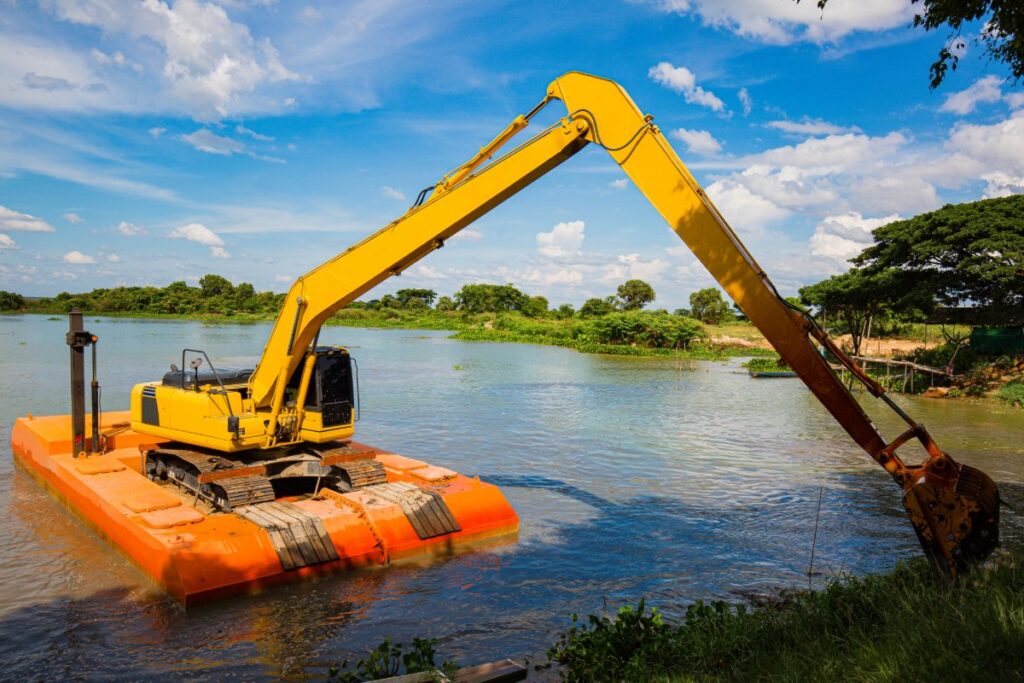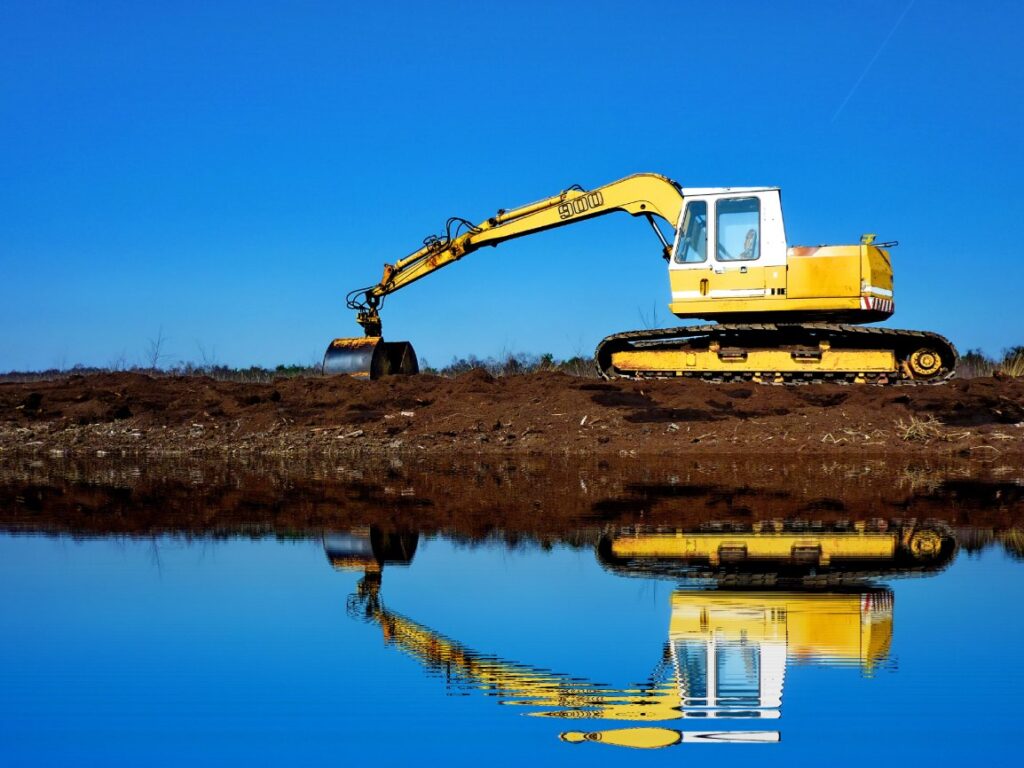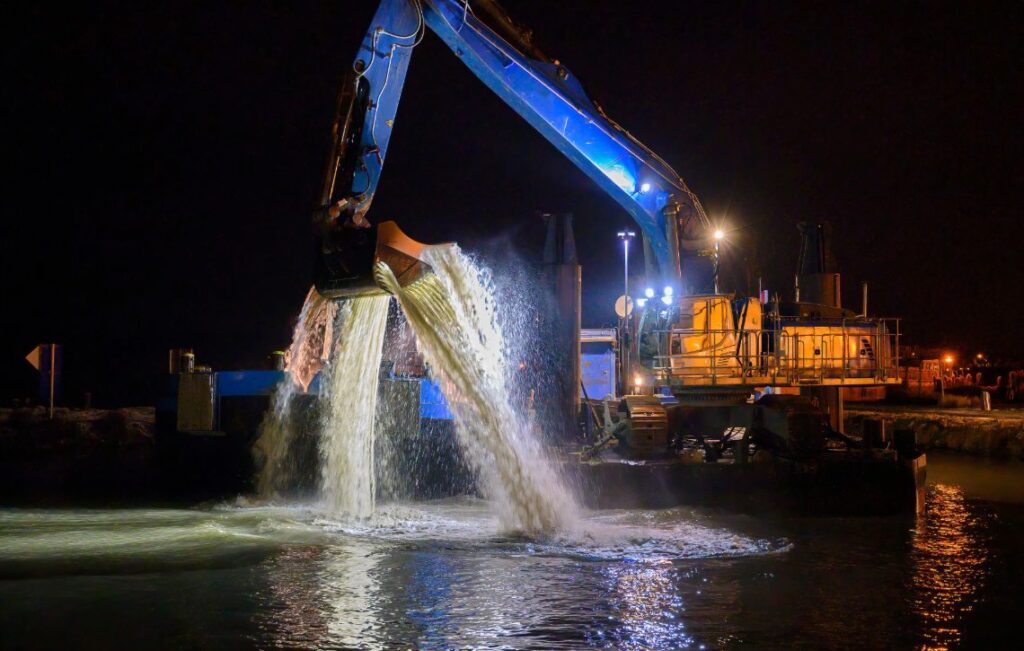Hydraulic dredging has become an indispensable solution in modern infrastructure development, environmental remediation, and water resource management. Whether it’s deepening navigation channels, rehabilitating stormwater systems, or supporting reclamation projects, this method offers a scalable and efficient approach for material removal across a range of environments.
In the African context, hydraulic dredging plays a crucial role in the mining sector, oil and gas operations, military installations, and municipal infrastructure development. From clearing sediment buildup in process water ponds and tailings dams to desilting storm drains and harbors, the hydraulic dredge provides operational flexibility and performance advantages that mechanical dredging systems often cannot match.
However, implementing hydraulic dredging in high-solids and shallow environments introduces complex technical and environmental challenges. These include maintaining flow in dense slurry conditions, maneuvering equipment in restricted water depths, and meeting strict environmental compliance standards. Overcoming these challenges requires a nuanced understanding of site-specific constraints and a strategic approach to selecting and operating equipment.
What is Hydraulic Dredging?
Hydraulic dredging is a sediment removal process that uses pressurized water and powerful pumps to excavate and transport material from underwater environments. Unlike mechanical methods that rely on clamshells or buckets, a hydraulic dredge utilizes suction and cutter-head technology to break up sediments and mix them into a slurry. This slurry is then pumped through discharge pipelines to designated dewatering, containment, or disposal areas.
A typical hydraulic dredging system includes several key components: the hydraulic dredge platform (either floating or amphibious), a cutter-head or jet system for sediment agitation, heavy-duty centrifugal or slurry pumps, and an integrated pipeline network. Many systems also incorporate automation controls, GPS positioning, and turbidity monitors to optimize dredging precision and minimize environmental impact.
Hydraulic dredging differs fundamentally from mechanical dredging in its ability to handle continuous operations and move high volumes of sediment over longer distances. This makes it particularly well-suited for large-scale remediation efforts, channel maintenance, land reclamation, and flood control.
In Africa, industries increasingly depend on hydraulic dredging equipment to maintain operational efficiency. Mining companies use hydraulic dredges to manage tailings and recover valuable minerals, while oil and gas facilities rely on them for desilting access channels and managing brine ponds. Municipalities employ hydraulic dredging in stormwater management and wastewater lagoon maintenance, especially in urban areas where shallow basins and aging infrastructure limit access for conventional equipment.
The performance benefits of hydraulic dredging equipment are significant. These systems can process high solids concentrations with minimal downtime, reduce labor-intensive manual excavation, and deliver faster project turnaround. When engineered and deployed correctly, a hydraulic dredge offers measurable ROI by reducing equipment wear, fuel consumption, and overall project costs, while also improving compliance with environmental and safety regulations.
Environmental Challenges of Hydraulic Dredging

While hydraulic dredging is widely recognized for its efficiency and adaptability, it also presents significant environmental challenges, particularly in shallow, ecologically sensitive areas. These impacts must be thoroughly understood and managed to ensure regulatory compliance and long-term ecosystem protection.
One of the most immediate concerns during hydraulic dredging is the disruption of aquatic ecosystems. In shallow environments such as wetlands, estuaries, or municipal ponds, the movement of a hydraulic dredge can disturb bottom-dwelling organisms, damage aquatic vegetation, and fragment critical habitats. This disruption can lead to reduced biodiversity and altered food web dynamics, especially in areas with spawning grounds or migratory routes.
Another major concern is sediment resuspension. The agitation of sediments during hydraulic dredging equipment operation can significantly increase turbidity in the water column. Elevated turbidity reduces sunlight penetration, negatively affecting photosynthesis in aquatic plants and contributing to lower dissolved oxygen levels. In extreme cases, this can lead to hypoxic conditions, which threaten the survival of fish and invertebrate populations.
Hydraulic dredging also risks mobilizing contaminants that have settled in bottom sediments. In industrial and mining zones, these may include heavy metals, hydrocarbons, or other hazardous substances. Once resuspended, these contaminants can become bioavailable, posing serious risks to aquatic life and downstream users. Regulatory agencies in many African countries are now mandating more comprehensive site assessments and sediment testing before dredging activities can begin.
Changes in water quality and hydrodynamic patterns are another critical consideration. The operation of a hydraulic dredge—especially when paired with high-capacity hydraulic dredging equipment—can alter natural flow regimes, affect sediment transport downstream, and destabilize previously balanced aquatic systems.
Given these challenges, operators must navigate a growing landscape of environmental regulations. African water authorities and environmental agencies are implementing stricter standards for water quality, habitat protection, and post-project monitoring. For procurement and project leads, failure to meet these standards can result in project delays, fines, or reputational damage.
Mitigation Strategies
To address these risks, responsible hydraulic dredging operations employ a variety of mitigation strategies. One of the most effective is the use of silt curtains—floating barriers that contain turbidity and prevent sediment plumes from spreading beyond the immediate work area. These are especially important when using high-powered hydraulic dredging equipment in confined or shallow zones.
Real-time turbidity monitoring is another critical practice, enabling teams to adjust dredging intensity or pause operations if water quality thresholds are exceeded. This technology is often integrated into advanced hydraulic dredge control systems.
Precision dredging—guided by GPS and sonar—also plays a key role in minimizing environmental disturbance. By targeting only the required sediment layers and avoiding over-excavation, operators can reduce unnecessary habitat disruption and limit the spread of contaminants.
Finally, the configuration of hydraulic dredging equipment can be adapted to minimize its ecological impact. Shallow-draft hydraulic dredges, eco-friendly cutter-heads, and low-turbulence pump systems are increasingly available to support operations in sensitive environments. These specialized configurations enable effective material removal while aligning with stringent environmental requirements across African regions.
Operational and Engineering Challenges in High-Solids and Shallow Environments

Deploying a hydraulic dredge in high-solids and shallow environments presents a distinct set of engineering and operational difficulties that must be addressed to ensure project success and equipment longevity.
One of the most pressing issues is abrasive wear and clogging caused by high-solids slurries. When dredging dense mixtures of sand, clay, gravel, or mineral-laden sediment, the internal surfaces of pumps, pipelines, and cutter-heads endure constant erosion. This is particularly problematic when standard or underspecified hydraulic dredging equipment is used, leading to premature failure, lower productivity, and costly unplanned shutdowns.
Shallow water depth further complicates dredging operations. Hydraulic dredging equipment often requires a minimum draft to operate efficiently, and navigating in low-depth areas increases the risk of grounding, hull damage, or reduced pumping performance. Even purpose-built shallow-draft hydraulic dredges must be carefully positioned and stabilized, especially in irregular or debris-strewn basins where bottom conditions are unpredictable.
Another core challenge lies in managing pumping distance and discharge pressure. Moving high-solids slurry over long horizontal or vertical distances places heavy demands on both the hydraulic system and the pump’s capacity. Without proper pipeline design, booster pumps, or flow monitoring, material transport becomes inefficient, and the risk of line blockage increases significantly. This is especially true in remote mining or inland industrial locations where disposal sites are located far from the dredging area.
Equipment downtime is a frequent concern in these demanding environments. When operating in high-solids zones or lagoons with legacy industrial waste, hydraulic dredging equipment is prone to accelerated wear, seal failure, and impeller damage. Routine maintenance intervals may need to be shortened, and spare part inventories increased, to prevent extended delays and productivity loss.
In legacy sites—such as abandoned mines, brine ponds, or contaminated urban basins—dredging teams also face the added difficulty of handling buried debris, unstable substrates, or hazardous materials. Foreign objects, such as rebar, logs, or geotextile liners, can easily jam cutterheads or damage pumps if not properly identified and managed in advance. In such environments, standard hydraulic dredge designs often require modification or the addition of screens, teeth, or agitation tools to effectively handle irregular material loads.
These challenges demand more than just off-the-shelf solutions. Proper equipment selection, site planning, and operator training are crucial to ensure that hydraulic dredging equipment delivers reliable performance under demanding operating conditions.

Selecting the Right Hydraulic Dredging Equipment
Choosing the correct hydraulic dredging equipment is crucial for achieving operational efficiency, minimizing wear, and ensuring regulatory compliance, particularly in high-solids and shallow environments. The right configuration begins with aligning the hydraulic dredge size and cutter system to the physical characteristics of the sediment. Fine silt and clay require different cutter-head speeds and intake configurations compared to coarse sand or gravel, which demand more abrasive-resistant materials and higher power throughput.
For high-solids concentrations, pump systems must be carefully engineered to ensure continuous flow and minimize clogging risk. This includes selecting pumps with oversized impellers, high-chrome wear components, and adjustable speed drives. Customization may also include double-suction pump configurations and slurry dilution systems that maintain a consistent solids ratio during transport.
In areas with limited water depth—such as stormwater basins, industrial lagoons, or estuaries—shallow-draft hydraulic dredge designs are essential. These platforms are designed with lightweight hulls, retractable spuds, and low-profile pontoons, enabling stable operation in restricted or fluctuating water levels without compromising dredging performance.
Another critical consideration is the pipeline network. Hydraulic dredging equipment must be paired with pipelines that are optimized for the dredge’s discharge capacity, sediment load, and the distance of transport. In longer runs, booster pumps may be necessary to maintain velocity and prevent settlement. When working in shallow or narrow corridors, flexible floating pipeline systems or modular hose floats can provide the needed buoyancy and directional control.
Precision is also vital when working in environmentally sensitive or structurally confined areas. Advanced hydraulic dredging equipment now integrates GPS-guided automation, sonar mapping, and remote control systems, allowing for real-time depth management and highly accurate dredge positioning. This enables project managers to minimize over-excavation, protect adjacent infrastructure, and meet tight environmental tolerances with greater consistency.
Factors That Influence Method Selection

Selecting a dredging method—whether hydraulic, mechanical, or hybrid—requires evaluating multiple project-specific variables. One of the most influential is depth and water accessibility. In shallow, sediment-filled basins or tight industrial channels, the ability to safely and efficiently mobilize and operate a hydraulic dredge becomes a limiting factor. Equipment with shallow-draft hulls, modular footprints, and amphibious capabilities is often preferred in such scenarios.
The volume and type of material to be removed also guide method selection. Hydraulic systems are highly effective for large-scale removal of soft or moderately dense materials, while mechanical dredging may be necessary for large debris, compacted clay, or rock.
Contamination risk and disposal method are equally important. If dredged material contains heavy metals, hydrocarbons, or hazardous waste, precision control and containment strategies are required. Hydraulic dredging methods, when combined with turbidity controls and sealed transport lines, are often better suited to minimize environmental exposure and support downstream dewatering or treatment processes.
Proximity to sensitive habitats—such as mangroves, aquatic preserves, or drinking water reservoirs—further influences decision-making. In such locations, the low-impact footprint and controlled sediment agitation of modern hydraulic dredging equipment can reduce the likelihood of ecological disruption compared to more invasive alternatives.
Project productivity goals and regulatory timelines also play a determining role. If strict deadlines are imposed or if operations are constrained by seasonal weather, permitting windows, or budget cycles, hydraulic methods often deliver faster throughput with fewer mobilization and transport requirements.
Lastly, cost-benefit analysis and ROI outlook must be considered. While the initial setup and equipment investment for a hydraulic dredge may appear higher than for other methods, the ability to achieve high-volume removal, reduce workforce requirements, lower fuel consumption, and limit downtime often results in a more favorable long-term return, especially in recurring or large-scale dredging programs.
Solving Dredging Challenges with Smart Hydraulic Solutions
Hydraulic dredging remains one of the most effective and adaptable methods for material removal in challenging conditions, particularly in high-solids and shallow-water environments. When properly engineered and executed, a hydraulic dredge can deliver high production rates, minimize environmental impact, and ensure consistent results even in confined or sensitive areas. The versatility of modern hydraulic dredging equipment allows operators to manage complex sediment profiles, comply with regulatory frameworks, and optimize project timelines.
Success in difficult dredging environments depends on more than just powerful machinery—it requires a strategic match between the dredging method, sediment type, site accessibility, and environmental requirements. From pump selection and cutter-head configuration to automation and pipeline design, every element must be carefully considered to deliver reliable, sustainable results.
Pump and Dredge Africa specializes in helping clients across mining, oil and gas, municipal, and military sectors identify and deploy the right hydraulic dredging equipment for their specific project needs. Whether you’re dealing with tailings, stormwater basins, industrial lagoons, or contaminated sediments, our team offers the technical insight and field experience to support your success.
Contact Pump and Dredge Africa today to consult on custom hydraulic dredge solutions built to perform in Africa’s toughest dredging conditions.


